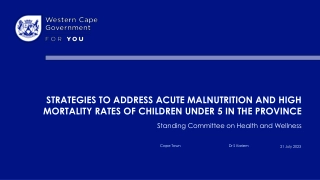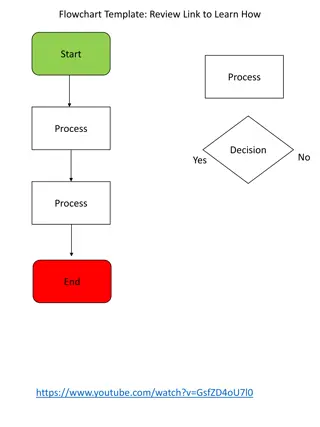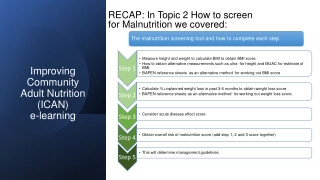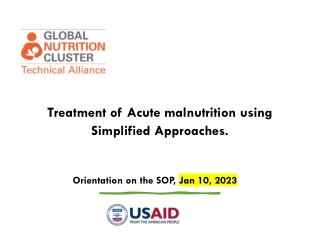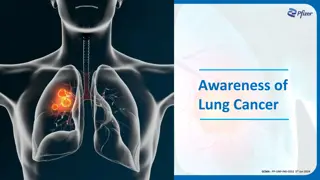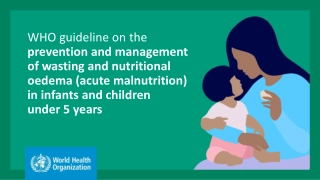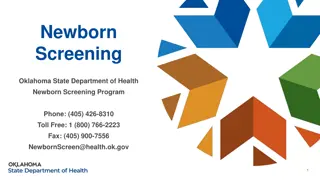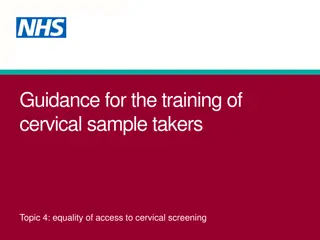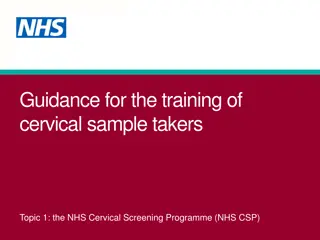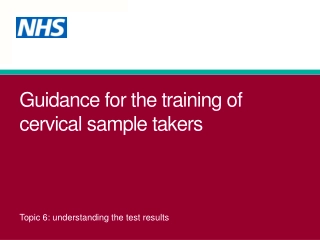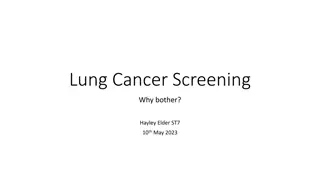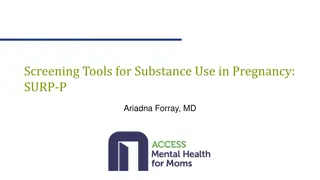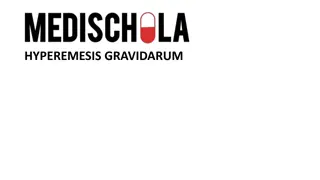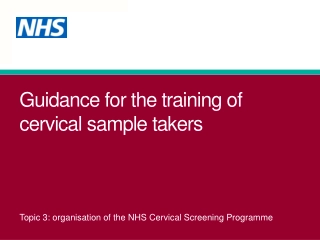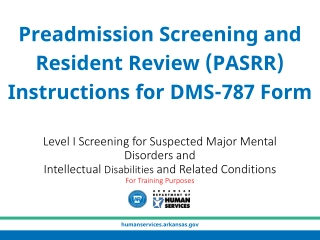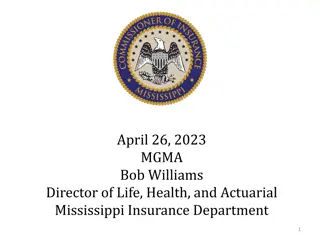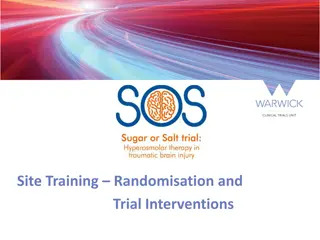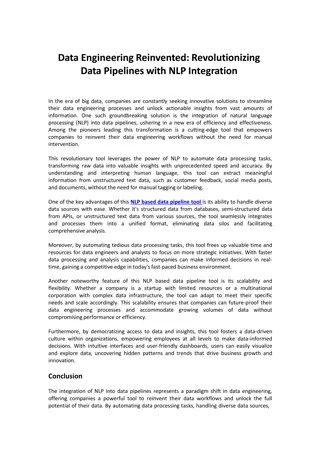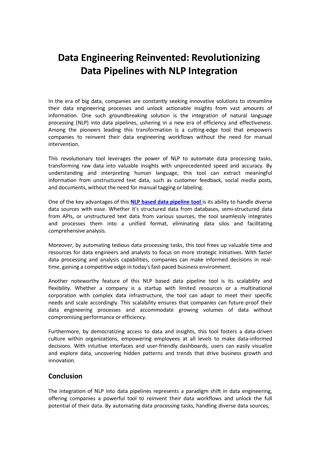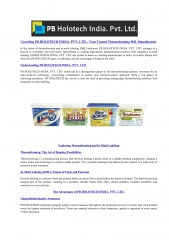Screening for Malnutrition with MUST Tool
Understanding malnutrition is crucial for maintaining optimal health. Screening with the Malnutrition Universal Screening Tool (MUST) is essential to identify individuals at risk. This tool involves assessing BMI, calculating weight loss scores, and determining overall malnutrition risk. Proper screening using validated tools like MUST is vital for patient care in various settings. Regular screening helps in timely intervention and management of malnutrition for improved health outcomes.
Screening for Malnutrition with MUST Tool
PowerPoint presentation about 'Screening for Malnutrition with MUST Tool'. This presentation describes the topic on Understanding malnutrition is crucial for maintaining optimal health. Screening with the Malnutrition Universal Screening Tool (MUST) is essential to identify individuals at risk. This tool involves assessing BMI, calculating weight loss scores, and determining overall malnutrition risk. Proper screening using validated tools like MUST is vital for patient care in various settings. Regular screening helps in timely intervention and management of malnutrition for improved health outcomes.. Download this presentation absolutely free.
Presentation Transcript
RECAP: In Topic 1 Introduction To Malnutrition we covered: A general balanced and varied diet for adults is important for optimal health and wellbeing. Improving Community Adult Nutrition (ICAN) e-learning Malnutrition is a serious condition that happens when your diet does not contain the right amount of nutrients. We are bound by legislation and standards to help prevent / treat malnutrition. Malnutrition can have a negative impact on patients health affecting both mental and physical function. There are many signs of malnutrition that are important to be aware of.
Leicestershire Nutrition & Dietetic Service ICAN - How to screen for Malnutrition Please DO NOT save or share this PowerPoint to avoid circulation of out of date information
Aims: Learning how to calculate Body Mass Index (BMI) Learning how to calculate percentage unplanned weight loss score Being aware of alternative measurements including mid upper arm circumference (MUAC) and ulna length Learning how to complete a Malnutrition Universal Screening Tool (MUST) and obtain overall MUST score
Overview Now you have a good understanding of malnutrition, this power point will cover how to screen for malnutrition using the Malnutrition Universal Screening Tool (MUST) and identify patients MUST score. It will take you through how to complete calculations needed for this type of screening including how to work out body mass index (BMI) and percentage weight loss. We have included explanations of how to use tools that are included in the MUST screening pack to aid these calculations. When it is not possible to obtain a weight or height there are alternative methods that can be used.
Screening for malnutrition should be completed via a validated screen tool. An example of this is the Malnutrition universal screen tool . (MUST) The following slides will explain how the MUST Tool should be completed. Screening for Malnutrition When should a MUST be used? All patients should be screened on admission to care setting i.e. hospital, care home. This should be repeated at monthly intervals.
MUST is a simple 5 step validated tool for use by all care workers in all care settings: Measure height and weight to calculate BMI to obtain BMI score Step 1 Calculate unplanned weight loss in past 3-6 months to obtain weight loss score Step 2 MUST Step 3 Consider acute disease effect score Obtain overall risk of malnutrition score (add step 1, 2 and 3 score together) Step 4 Step 5 This will determine management guidelines
M Malnutrition Universal Screening Tool ( MUST ) Please familiarise yourself with the MUST flowchart which will be discussed in detail over the next slides Please click picture to link to website for a larger image
Ethel our fictional patient will be used as an example throughout this presentation to help you work through the MUST calculations: Ethel is a lovely 79 year old lady currently residing in a residential care home. She enjoys eating her meals with others in the dining area and reading books in the day lounge with her friends and family. Ethel tends to go for a short walk after lunch in the communal gardens and has a good sense of humour. Her current weight is 60kg, previous weight 4 months ago: 63kg Her height is 1.52m
Step 1: How to calculate Body Mass Index in order to work out BMI score : Please see equation below which uses Ethel s current weight and height information to calculate her BMI. This will then help to identify her BMI score for Step 1.
Alternatively, if you do not have access to a calculator you can refer to BAPEN BMI Score sheet to obtain BMI. This can be done by: - Identify weight on vertical line (60kg) - Identify height on horizontal line (1.52m) - Follow the lines horizontally and vertically to identify where they meet ( . Icon) This is Ethel s BMI
How to interpret BMI Score Ethel s BMI (slide 8) is 25.97kg/m and will therefore give a score of 0 as BMI is above 20kg/m BMI Above: 20 kg/m2 Between:18.5-20 kg/m2 1 Below:18.5 kg/m2 Score 0 2 Keep a note of this score from Step 1 as you will refer to it later when adding up the total score for Step 4
FAQ: Consider visual / subjective judgement i.e. looser fitting clothes / jewellery, poorly fitting dentures which my indicate weight loss. An alternative measurement is mid upper arm circumference (MUAC). The above technique involve measuring the mid-point of the upper arm with a tape measure. It is a useful measure when a person cannot be weighed or if their weight is not likely to be a true reflection of the persons actual weight, e.g. if the patient has oedema or ascites (fluid build up causing swelling). The use of MUAC provides a general indication of BMI and is not designed to generate an actual score for use with MUST . What to do if you are not able to weigh the patient?
Please click the picture below to take you to the video of how to obtain a MUAC. This video has been sourced from Focus on undernutrition via YouTube. How to obtain a MUAC Please click for further written information on how to complete this measurement
FAQ: What to do if you are unable to measure the patient's height? Measuring someone's height can sometimes be difficult in some cases i.e. unable stand, poor posture. If height cannot be measured often people will know their height. It is useful to ask what their height is. If it is felt this may not be accurate, please consider using the following measurement. Recommended alternative measurement e.g. ulna length can be used. Please click video link to view a short clip on how to obtain an ulna measurement. This video has been sourced from Focus on undernutrition via YouTube.
Please see the following table to convert your ulna length into an estimated height. E.g.: Ethel s ulna length of 22cm for a women over 65 years old would equate to 1.52cm. A larger version of this table can be viewed on the Bapen website
Step 2: How to calculate Unintentional weight loss score: Unintentional weight loss is when you lose weight without intentionally changing your diet or exercise routine. This can be an early sign of malnutrition. Remember amputations will also cause weight loss. The following equation will explain how to calculate percentage of unplanned weight loss in order to obtain weight loss score for Step 2 This calculation shows us that Ethel has lost 3kg (63kg 60kg =3kg) over the last 3-6 months, therefore her unplanned weight loss is 4.76%
Ethels weight loss of 3kg (slide 15) equated to less than 5% and therefore the score for step 2 is 0 How to interpret percentage weight loss score Score 0 (normal variation) <5% body weight: 5-10% body weight: 1 (concern) >10% body weight: 2 (significant) Keep a note of this score from Step 2 as you will refer to it later when adding up the total score for Step 4
Alternatively, this BAPEN Weight loss score sheet can be used to identify unintentional weight loss score. Please follow the steps below: 1. Identify current weight e.g. 60kg 2. Deduct current weight from the heaviest previous weight within the last 3- 6 months. E.g. Ethel s previous weight was 63kg therefore 63-60=3kg . Find correlating weight loss column where this figure falls. 3. Unintentional weight loss score will be determined by the column that the weight loss in kg falls in. E.g. for Ethel, the score would be Score 0 as weight loss of 3kg is in the green column which equates to <5% total weight loss.
FAQ: Please be mindful that there are some situations where a decrease in body weight would not be classified as unintentional weight loss i.e. patient actively trying to lose weight or improve their diet, a reduction in oedema, having an amputation and error in accurately recording or measuring weight e.g. swapping from standing to sitting scales.
Step 3: Acute disease effect (ADE) ADE is considered for patients who are acutely ill and have had or are likely to have no nutritional intake for more than 5 days An acutely ill patient can be defined as critically ill; having swallowing difficulties e.g. after stroke, head injuries, or undergoing gastrointestinal surgery ADE is most likely applicable to patients in hospital Add 2 to overall score if ADE is appropriate Ethel is not acutely ill and is not in hospital therefore our score for step 3 is Score 0 Keep a note of this score from Step 3 as you will refer to it later when adding up the total score for Step 4
Quick reminder: So far you have obtained the following scores: Step 1 BMI Score as shown on slide 10 ( score 0 ) Step 2 Unintentional weight loss score as shown in slide 16 ( score 0 ) Step 3 Acute disease effect score as shown on slide 19 ( score 0 ) You will now use these to calculate the overall score for Step 4 Overall risk of malnutrition
Step 4: Overall risk of malnutrition M Malnutrition alnutrition U Universal niversal S Screening creening T Tool ool ( MUST ) ( MUST ) Taking into account the scores you have obtained for Ethel for Step 1 + Step 2 + Step 3, what do you think is the score for step 4 (overall risk for malnutrition) for Ethel? Step 4 Overall risk of Malnutrition MUST score is 0 Please click picture for link to website
Step 5: Management guidelines will be covered in the next PowerPoint
SUMMARY: You have now learnt how to to complete a Malnutrition Universal Screening Tool (MUST) and obtain overall MUST score. This includes Measure height and weight to calculate BMI to obtain BMI score. You have also learnt how to obtain alternative measurements such as ulna for height and MUAC for estimate of BMI. You are also aware of BAPEN reference sheets as an alternative method for working out BMI score Step 1 Calculate % unplanned weight loss in past 3-6 months to obtain weight loss score. You are also aware of BAPEN reference sheets as an alternative method for working out weight loss score Step 2 Consider acute disease effect score Step 3 Obtain overall risk of malnutrition score (add step 1, 2 and 3 score together) Step 4 This will determine management guidelines Step 5
Knowledge Check: Ethel is 79 Her weight is 60kg Her height is 1.52m Four months ago her weight was 63kg Ethel has had a cold for the past week and has been eating half of her meals for the past 3 days Case study Step 1 :What is her BMI? 25.97kg/m2 Answer (click answer boxes to reveal answers) Step 2: How much weight has she lost in the last 4 months? 3kg / 4.76% Answer If your answers are incorrect please refer back to previous slides for guidance on steps 1-4 of the MUST screening tool Step 3: Is Ethel acutely unwell and has been or likely to have little of no nutritional intake for 5 days? No Answer Answer Step 4 :What is her overall MUST score? 0


